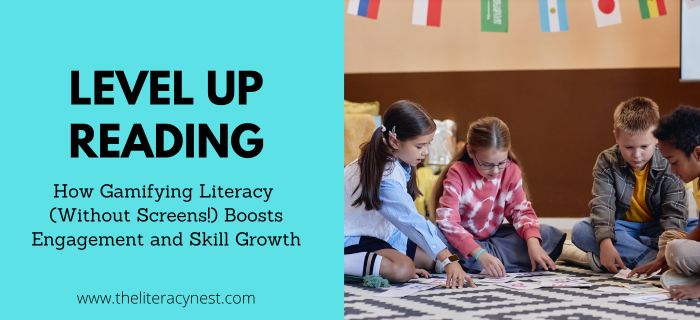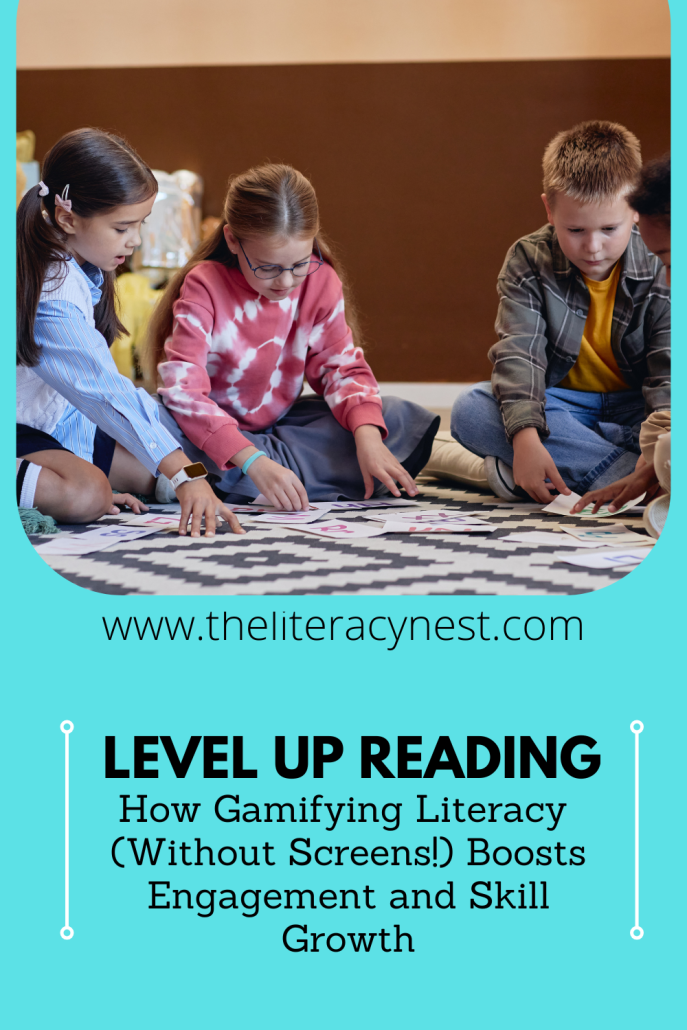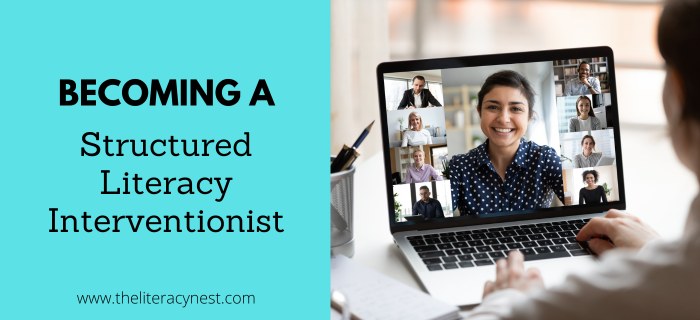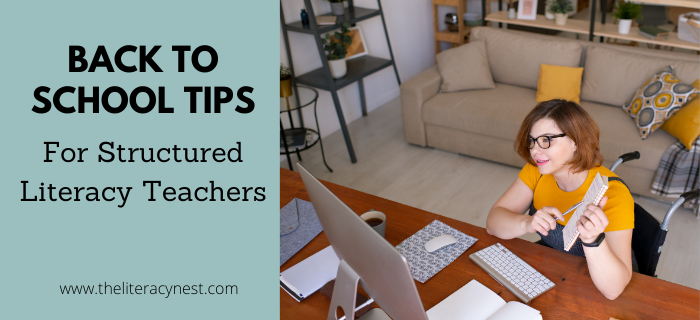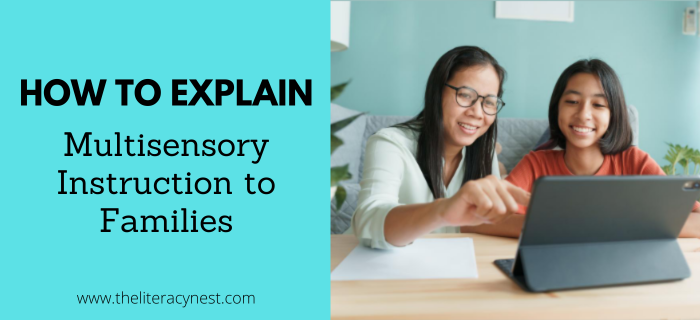Level Up Reading: Literacy Games Without Screens
Why Play Still Matters in Serious Reading Instruction
Teachers who use structured literacy or Orton-Gillingham lessons know how important direct and explicit teaching is. But even with all that structure, there’s still room for play. When teachers bring simple, low-prep literacy games into reading instruction, something powerful happens. Students stay motivated, pay attention longer, and build real skills. Best of all, none of this requires screens, apps, or complicated prep. Thankfully, there is a lot of research on how teachers can gamify literacy in an impactful way.
Research Behind Literacy Games (Without Screens)
#1 Short, Structured Games Build Early Literacy Skills
A recent study of preschool and kindergarten classrooms found that quick, focused games on letter-sound knowledge and phonological awareness helped students grow in letter-word recognition. Teachers also said the games were easy and fun to use (Strasser et al., 2023). Make sure to keep games short (8–12 minutes), connect them to the day’s skill, and repeat them often.
#2 Board Games Support “Thinking Skills”
Research shows that executive-function skills, like working memory and flexible thinking, play a key role in reading. Studies using board and card games in primary grades improved these skills and boosted early literacy growth (Vita-Barrull et al., 2023). Plus, rule-based games help students develop the same mental habits they need for decoding and self-correcting. It’s a win-win!
#3 The Bornholm Model and the Power of Daily Language Games
In Nordic classrooms, teachers use short, oral language games every day. Oral language games help students practice rhyme, syllables, onset-rime, and phoneme awareness. Newer studies show that students, especially those at risk for reading challenges, make stronger gains in early reading (Nilvius et al., 2025; Kjeldsen, 2019). Therefore, consistent, structured language games make a real difference.
#4 Literacy Games Build Motivation and Community
Teachers in several qualitative studies noticed that literacy games increased confidence, lowered anxiety, and helped students work together (Sydik, 2017; Adams, 2019). Learning should feel playful and not like a test. When this happens, students are more willing to take risks and grow.
How to Bring Literacy Games Into the Classroom
#1 One Skill at a Time
Each game should focus on one micro-skill, such as:
- Rhyming
- Phoneme segmentation
- Grapheme–phoneme mapping
- Word building
- Morphology practice
A single focus keeps the game clear and helps students build accuracy and automaticity.
#2 Be Short and Consistent
Most studies used daily game blocks under 15 minutes. Think of these as your quick warm-ups.
Example weekly routine:
- Mon–Wed: 10-minute phonological awareness game
- Thu: decoding or fluency game
- Fri: morphology or vocabulary challenge
#3 Use Multisensory Elements
To stay aligned with OG principles, mix in movement and tactile tools:
- Tossing a beanbag for each sound
- Using letter tiles for sound switching
- Tapping or stepping for syllables
- Passing tokens during turn-taking
These cues strengthen memory and attention.
#4 Show Students Their Progress
A little visible growth goes a long way:
- Phonogram mastery charts
- “Boss level” skill challenges
- Whole-class cooperative goals
Positive feedback builds motivation.
5. Create an Emotionally Safe Environment
Literacy games should feel supportive, not competitive:
- Treat mistakes as “debug moments”
- Praise effort and strategy
- Use team play when possible
Literacy Games You Can Try Tomorrow
| Skill | Game Idea | Materials | Time |
|---|---|---|---|
| Phoneme Awareness | “Sound Toss” – toss a beanbag for each sound in a word | Beanbag | 5 min |
| Blending | “Mystery Word” – stretch sounds; students guess the word | None | 5 min |
| Decoding | “Flip & Read” – flip word cards and read as many as possible | Word cards | 5 min |
| Encoding | “Build & Change” – switch one tile to make a new word | Letter tiles | 10 min |
| Morphology | “Affix Match-Up” – match base words with prefixes/suffixes | Cards | 10 min |
Students absolutley love anytime we do morphology games. Morphology literacy games are a playful way to practice any OG lesson. Try out these morphology games for free!
No-Prep Literacy Games Bundle
If teachers want an easy way to bring literacy games into OG or structured-literacy lessons, this Orton-Gillingham Phonics Games & Activities Bundle is a great option:
This bundle includes:
- Phonics games for decoding and encoding
- Card games for syllables and phonograms
- Activities for blends, digraphs, silent-e patterns, and more
- Multisensory OG-friendly routines
- Printable boards, cards, and recording sheets
Teachers can use these literacy games during:
- Small-group lessons
- Intervention blocks
- Centers
- Independent practice
- Quick warm-ups or exit activities
Because everything is ready to print and use, teachers can try new literacy games right away. This means, no extra prep or materials!
Need Word Lists for Games and Lessons? Try This Tool Free
Teachers who create lots of word cards, blending lines, or spelling lists will love Word List Builder.
You can try it free for 14 days when you choose a monthly or annual plan: Click here to try it!
This resource helps teachers build customized phonics and spelling lists and sort words by pattern. Then, teachers can export the lists to games or other activities they may use. Plus, you differentiate lists quickly! This helpful video will explain exactly how it works!
Want to Learn More About Literacy Games?
For more ideas, teachers can listen to this Together in Literacy podcast episode:
This episode explores how play, creativity, and structure can work together to support all readers, especially those who need explicit instruction the most.
Enhance Learning with Literacy Games
Gamification doesn’t replace structured literacy, it enhances it. When teachers use short, targeted games, students stay motivated and build real reading skills. And the best part? None of it requires screens. Just thoughtful routines, helpful tools, and a little joy.
If you’re ready to bring more playful learning into your classroom, start small, stay consistent, and try a new game this week. Your students will feel the difference, and so will you.

